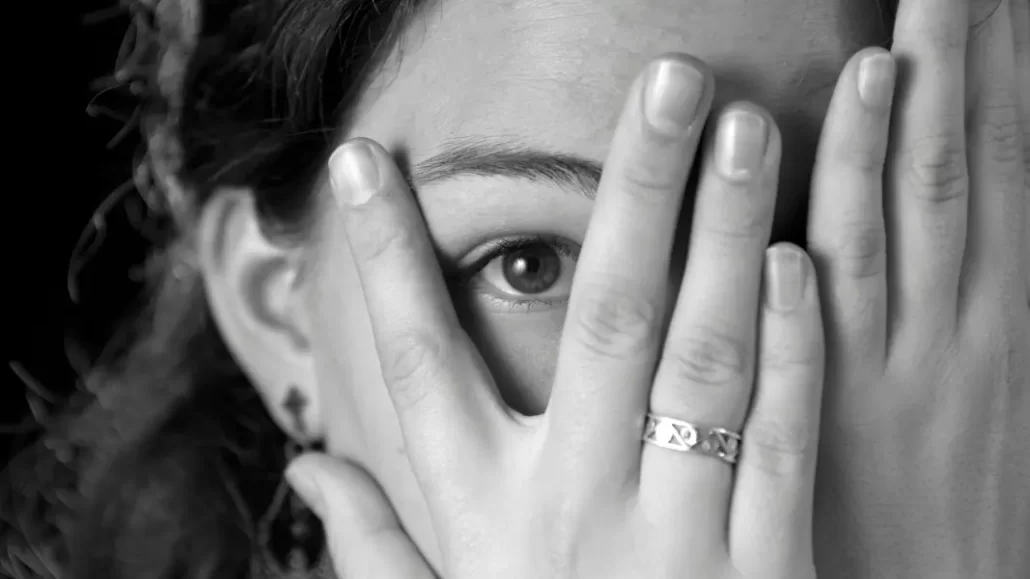The terms fear and anxiety are often used interchangeably, creating a belief that they are one and the same. In fact, they are quite different. Though seemingly similar, each has unique features that are beneficial to understand. Recognizing the difference between fear and anxiety can be difficult if you don’t have the tools to distinguish between them. By understanding how fear differs from anxiety, we may better understand how to assess and address them when they arise.
What’s the difference between fear and anxiety?
Though fear and anxiety may impact your life similarly, they are different in ways that are helpful to understand.
Fear is an emotional state that is often associated with a specific and immediate threat to our safety or wellbeing. For example, if we see a bear while hiking, our emotional state quickly shifts to a state of fear. This shift creates several necessary changes in our bodies. These changes start with a part of the brain called the amygdala. This part of the brain helps to trigger our motor responses associated with protecting ourselves against a threat. This is where the process begins in our flight, fight, or freeze response. Our body, far before we process the threat, begins preparing ourselves to either flee, fight back, or freeze in order to best protect ourselves from the threat. This is how our bodies naturally cope with and respond to fear.
Anxiety may trigger similar bodily reactions as fear, such as increased heart rate, sweating, or feelings of fight, flight, or freeze. However, anxiety tends to be less specific and often future oriented. Though anxiety may still arise from a perceived threat, this threat is usually not a clear or immediate danger to us.
Often anxiety exists as a form of preemptive concern over feeling fear. For example, if we recently heard on the news of another morning hiker who came across a bear during their hike, we may feel a sense of a threat before we take our next hike. Though no clear threat is present, our body feels anxiety towards a potential threat and triggers some of our bodily responses.
Why is it important to distinguish between fear and anxiety?
Distinguishing between these feelings may help create clarity on how to cope with fear and anxiety. Since fear and anxiety differ, the tools we use to process them may differ as well.
Fear is an emotion that has been beneficial to our survival as a species. When we feel fear, our body begins a process that prepares us to protect ourselves from a threat. Fear and the reaction to it happen very quickly. We tend to understand, process, and cope with fear after the threat to us has been eliminated. Once we’re safe from the perceived threat, other biological and emotional responses will follow to help regulate our bodies.
Anxiety acts differently. Often, anxiety can be present without any stimulus, which can cause confusion and distress. There are various types of anxiety as well, many of which remain with us for longer periods of time. If we find that we’re not in immediate danger of a perceived threat and are instead experiencing anxiety, we may be able to identify our experience as anxiety. This can help us employ tools for anxiety that allow us to lessen its effects.
Read more about different types of anxiety.
How do I tell the difference between fear and anxiety?
Am I anxious? Am I fearful? One of the key factors that differentiate fear from anxiety is cognitive appraisal, or the way our minds assess and interpret a situation. In fear, the threat is clear, and the body’s response is often justified. In anxiety, the perceived threat may be exaggerated or irrational, but the body still responds as if the danger were real.
Though fear and anxiety symptoms may often overlap, there are ways to identify signs and symptoms of both.
Both fear and anxiety often have a cognitive and physiological response. They also serve the purpose of keeping us safe. However, when anxiety begins to become chronic and interferes negatively in our lives, it can become more harmful than helpful.
To tell the difference between fear and anxiety, it is important to first understand that they are in fact different. Though they can feel similar, they serve two different purposes.
This may seem simple, but the act of knowing that this difference exists is a tool in and of itself when coping with fear and anxiety.
Once we’re aware that fear and anxiety are different, we can increase our awareness of our body’s reactions to both. For example, if you are getting ready to take an exam and feel the sensation of sweating and rapid heartbeat, you can assess that what you are feeling is anxiety and not fear. This can allow you to more properly assess how to process these sensations and feelings in your body.
Read more about the symptoms of anxiety here.
How do I process fear vs. anxiety?
To process and cope with fear, we must experience the emotion and allow for our body to react appropriately to the threat. Remember, fear and its response happen faster than we can perceive, so listening to our instinct to flee, fight, or freeze is necessary. Once the threat is removed, your body will attempt to process the experience by regulating your emotional and physical states.
Since no threat is immediately present when experiencing anxiety, processing anxiety can be more complicated. Given the lack of a threat, we may feel in an elongated or constant state of anxiety that is difficult to process. There are tools for anxiety available to help us cope.
Name What You’re Feeling
First, simply naming what we’re feeling can help to reduce the impact of what we’re experiencing.
In the example of feeling anxiety before an exam, you can identify that you are anxious about the exam due to various factors, none of which are directly associated with your immediate safety or wellbeing. Just by naming this feeling, you can begin to regulate your body away from the fight, flight, or freeze function of fear and refocus your attention on the task at hand.
Implement Helpful Techniques
Second, we can implement techniques such as regulated breathing or mindfulness to help shift the body away from future perceived threats to a current sense of safety.
Understand Patterns
Third, when we’re aware of our anxiety, we can begin to understand its patterns. Often, anxiety presents itself in situations where we previously felt discomfort or fear. When we recognize these patterns, we can work to better understand the patterns and prevent them from repeating.
Often, below any sense of anxiety is a feeling that is being ignored. For example, if you are anxious about an exam, you may actually be confusing a feeling of fear over failing the exam with a sense of self-worth and worry, one more directly associated with a feeling of sadness. When we understand these distinctions, we can begin to implement tools to change these beliefs and allow for our true emotions to guide us more authentically toward our intended goals.
Though both fear and anxiety may seem similar, they serve unique and often useful purposes in our lives. When we recognize the differences between them, and further our understanding of how they are triggered, we can utilize the tools at our disposal to process them individually and with intentionality.
How does identifying anxiety and fear allow you to better your mental health?
Are you interested in exploring how you manage fear and anxiety? Reach out to myTherapyNYC to find out which of our therapists would be a good fit for you!
Can you recall a time when you might have confused fear or anxiety (or vice versa)? Join the conversation in the comments below!
- What’s the Difference Between Fear and Anxiety? - November 30, 2023






1 comment
Thank you for so clearly explaining this. A lot of helpful information here.